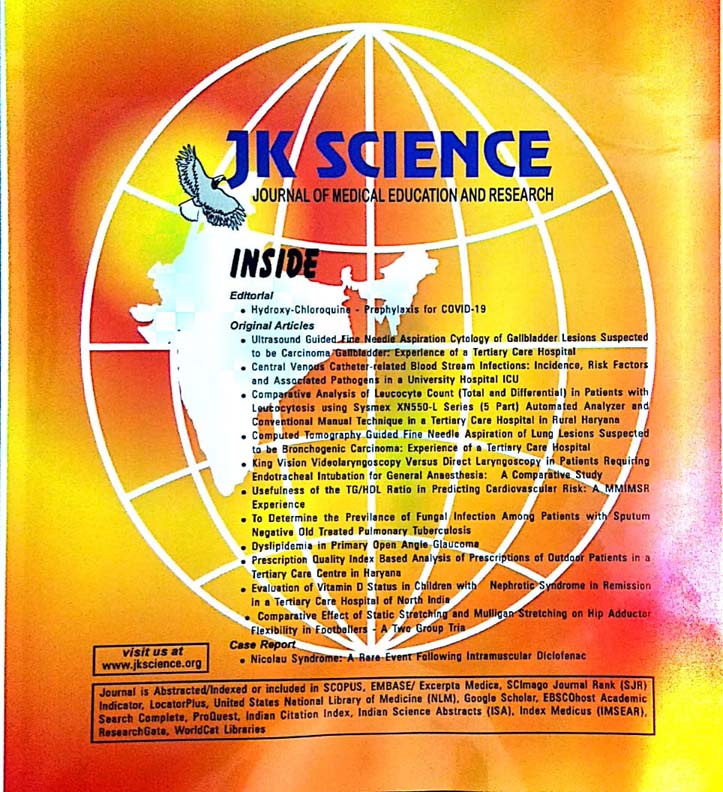Demographic and Clinical Insights into Vitiligo: A Cross-Sectional Study at a Tertiary Care Centre
Keywords:
Vitiligo, Clinical profile, Family history, Autoimmune associationAbstract
Background: Vitiligo is a prevalent acquired pigmentary disorder with a worldwide incidence of 0.5% - 2%, rising to 8.8% in India. Despite its non-lethal nature, it significantly impacts quality of life due to its psychosocial effects.
Aim: To examine the demographic, etiological, and clinical profiles of vitiligo patients.
Material and Methods: This cross-sectional study was conducted at a tertiary care hospital involving 142 patients over a period of one year. Detailed history, clinical examination, and relevant investigations were performed to rule out other autoimmune disorders.
Results: The study comprised 84 (59%) males and 58 (41%) females, ranging in age from 3 to 72 years, with a higher prevalence in younger individuals. Vitiligo was progressive in 69.1% patients, with vitiligo vulgaris being the most common subtype seen in 77.5% patients. Segmental vitiligo exhibited the earliest onset. A family history of vitiligo was found in 29 (18.3%) patients. Koebner’s phenomenon and trichrome sign, present in 36 (25.4%) and 63 (44.4%) patients respectively, were associated with disease progression. The lower limb was the most frequently affected site, followed by the head and neck. Autoimmune conditions, particularly hypothyroidism and diabetes mellitus, were noted in 21 (14.8%) cases. A family history of other autoimmune conditions was present in 29 (20.4%) patients.
Conclusion: Vitiligo predominantly affects younger individuals and often progresses, with vitiligo vulgaris being prevalent. Segmental vitiligo has an earlier onset. Koebner’s phenomenon and trichrome sign are linked to disease progression. Significant associations include family history of vitiligo and autoimmune conditions, highlighting the importance of early diagnosis and management.
Downloads
Downloads
Published
How to Cite
Issue
Section
License
Copyright (c) 2025 JK Science: Journal of Medical Education & Research

This work is licensed under a Creative Commons Attribution-NonCommercial-ShareAlike 4.0 International License.





